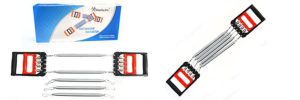 How can rotator cuff muscle workout routines enhance the health of your rotator cuff? All of it boils all the way down to a skeletal muscle tissues skill to alter. This variation is accelerated by rotator cuff train and I intention to clarify why that’s.
How can rotator cuff muscle workout routines enhance the health of your rotator cuff? All of it boils all the way down to a skeletal muscle tissues skill to alter. This variation is accelerated by rotator cuff train and I intention to clarify why that’s.
How a muscle works
To completely perceive how this works it’s essential to delve into how a muscle truly works and what its inner properties are. The important thing nonetheless is that train can, over time, alter a muscle fibre sort Ihuniu Chest Expander | Hand Gripper Arm Pull B00DB0RI88.
Fibre sorts
A body’s muscle fibres are cut up into three distinct sorts. The categories had been outlined just about by the pace at which they cut up ATP – Adenosine Triphosphate.
As well as, skeletal muscle fibres range with respect to the metabolic processes they use to generate ATP. Additionally they differ markedly by way of the onset of fatigue. Based mostly on varied structural and useful traits, skeletal muscle fibres are labeled into three differing kinds: Kind I fibres, Kind II B fibres and sort II A fibres.
There are two muscle fibre sorts in people, Kind I or sluggish twitch and Kind 11B quick twitch. We now have roughly 50% of every.
Kind I fibres are additionally referred to as sluggish twitch or sluggish oxidative fibres. They comprise giant quantities of myoglobin, many mitochondria and plenty of blood capillaries. Kind I fibres are crimson, cut up ATP at a sluggish price, have a sluggish contraction velocity, are very proof against fatigue and have a excessive capability to generate ATP by oxidative metabolic processes. Such fibres are discovered, for instance, in giant numbers within the postural muscle tissues of the neck.
Kind II B fibres are additionally referred to as quick twitch or quick glycolytic fibres. They comprise a low content material of myoglobin, comparatively few mitochondria, comparatively few blood capillaries and huge quantities glycogen. Kind II B fibres are white, geared to generate ATP by anaerobic metabolic processes, not in a position to provide skeletal muscle fibres constantly with ample ATP, fatigue simply, cut up ATP at a quick price and have a quick contraction velocity. Such fibres are discovered, for instance, in giant numbers within the muscle tissues of the arms.